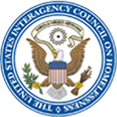USICH Blog
09/06/2012 - A New Way to Invest in Solutions: Social impact bonds and Homelessness
Several pilot programs in the United States have recently begun using social impact bonds, or Pay-For-Success bonds, to finance initiatives aimed at solving entrenched social problems like homelessness. First implemented in the United Kingdom, social impact bonds are an innovative way that some American cities can work with established private and non-profit partners to create real change. So what are social impact bonds and what are the new projects in the United States that use this model of financing?
Social impact bonds (SIBs), or pay-for-success bonds, are a new financial instrument that utilizes the typical structure of a municipal bond, where bonds are used to procure funds from private sector investors who are then paid back with interest if the project can achieve required outcome targets. As distinct from municipal bonds, SIBs invest in social innovation programs that range in focus from the justice system to homelessness and can therefore be used to incentivize change in both public and nonprofit systems working on these issues.
As mentioned, the first social impact bonds were used in the United Kingdom in September 2010 to focus on curbing recidivism among adult males recently released from prison in one city. Social Finance (a collaboration of cross-sector investors) raised £5 million, or $7.94 million, with the stipulation that investors will only receive their money back if the program succeeds. This is a stipulation in every social impact bond investment. In this project, data is being collected over a six-year period and analyzed against recidivism rates of group prisoners that are not part of the new program (the control group). If the city’s recidivism rates are 7.5 percent less than the control group the program “succeeds.” The City of London also recently announced a pay-for-success initiative to help solve the problem of chronic homelessness in the city.
New York City has also begun a social impact bond program focused on decreasing recidivism for adolescent men currently at Riker’s Island, with an initial investment of $9.6 million by Goldman Sachs. The program will be overseen by social service provider MDRC, who will contract with two organizations to provide counseling and education for an estimated 3,400 young men. If recidivism for this group of men drops by 10 percent, Goldman Sachs will receive all of its investment back via the Department of Corrections. Bloomberg Philanthropies will also be providing loan guarantees to MDRC, and, if successful, MDRC will continue to invest more money in expanding the program.
At the beginning of August, Massachusetts became the first state in the nation to implement social impact bonds to help solve problems in two specific areas, juvenile justice and chronic homelessness. The chronic homelessness initiative, the first social impact bond initiative to focus on homeless in the U.S., will be led by the Massachusetts Housing and Shelter Alliance (MHSA). This program seeks to raise the number of permanent supportive housing units in its current strategic plan, Home & Healthy for Good , which uses a Housing First model to house those experiencing chronic homelessness who are frequent users of hospitals and emergency rooms. MHSA will partner with the Corporation for Supportive Housing (CSH), Third Sector Capital Partners , and the United Way of Massachusetts Bay and Merrimack Valley .
SIBs are a relatively new concept; however, they provide some major advantages. They deliver an opportunity for government entities to direct funds toward interventions that have evidence of success, as programs which do not achieve outcomes will not receive funding. SIBs allow the government to allocate the risk of funding prevention services to the private sector. Money is also less likely to be divided into silos, creating better coordination and collaboration between different agencies.Because SIBs are still in their infancy there are undoubtedly challenges which need to be addressed. One of the largest challenges is putting a dollar value on a social outcome. Payments must be based on what attaining the outcome is worth to the government in potential public savings and to society in potential social benefits, rather than on how much accomplishing the outcome will cost. Parsing out how these benefits are valued will be essential, as investors will only be paid if the outcomes are met. As pilot programs continue to be established, we look forward to the ways this unique financing tool can engage the public, nonprofit, and business sectors to solve social problems using proven methods.



































